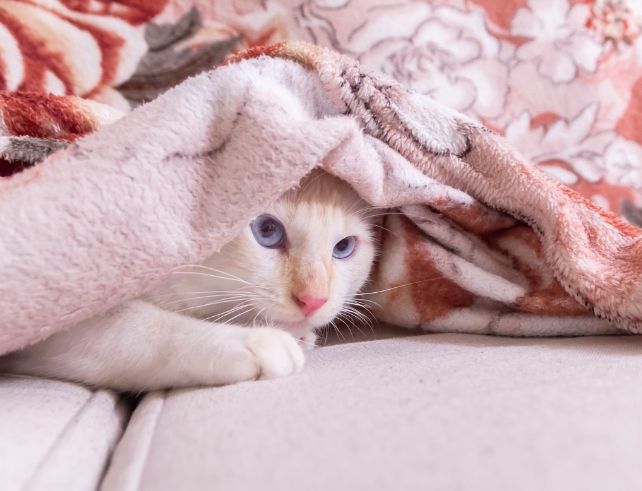Understanding cat behavior can be a journey full of surprises. Have you ever caught your feline friend doing something peculiar, and found yourself wondering why? Here at Let’s Have Pet, we share your curiosity. Cats communicate in their unique way, with a significant part of this communication coming through body language. By learning to interpret these signs, we can deepen our bond with our cats and ensure their well-being.
Cats and Their Secret Language

Although cats might seem aloof, they’re indeed social creatures, in their unique way. Consequently, they’ve developed a rich style of communication, which is a mix of sounds, facial expressions, and body postures. Therefore, the more we understand these signs, the deeper our relationship with our cats becomes.
How to Read Cat Body Language
The Tale of the Tail

A cat’s tail serves as an emotional barometer. When the tail stands upright, especially with a curl at the end, it signals a happy, confident cat, similar to a warm hello. However, when the tail puffs up like a bottle brush, it shows fear, aggression, or surprise. On the other hand, a tail wrapped around their body means your cat might feel anxious or nervous. In addition, a twitching or thrashing tail often shows your cat is irritated or upset.
Eye Signals

Cats express a lot through their eyes. A slow blink from a cat to its owner is a “kitty kiss”—a sign of trust and affection. Conversely, wide pupils (in a normally lit room) can show excitement, fear, or aggression. Moreover, if your cat’s eyes are narrow or squinted, they may be angry or uncomfortable.
Ears as Indicators

A cat’s ears work like radar dishes, always moving to pick up sounds. Ears facing forward suggest curiosity or enjoyment. However, ears flattened sideways or backward often mean fear, aggression, or irritation.
What Posture Shows

A relaxed cat often lies on its back, exposing its belly, signaling trust and contentment. However, a crouching cat with flat ears and wide pupils is in defense mode. Furthermore, if your cat arches like a Halloween cat with its fur standing on end, it’s displaying an aggressive posture.
Vocal Clues

Although cats depend mostly on body language, they also use a variety of sounds to express feelings. A purr generally shows contentment, but can also mean discomfort or distress. Besides, hissing and growling clearly show displeasure or fear. Finally, meowing can mean a variety of things; understanding the context and frequency can help you decode the message.
Strengthening Your Bond with Your Cat

Knowing your cat’s body language strengthens the bond between you and your feline companion. Moreover, it also helps you cater to their well-being as you become more in tune with their needs and emotions.
Wrapping Up

Deciphering cat behavior can feel like cracking a cryptic language. But with keen observation and patience, you can understand your feline friend’s body language. The more you understand, the more peaceful your co-existence will be. Understanding these non-verbal cues makes you more sensitive to their needs and moods, leading to a happier and healthier cat. Therefore, let’s enrich our feline friendships through understanding and communication.
Remember: All cats are unique, and individual variations are expected. This guide offers a general understanding, but your cat may communicate differently. The more time you spend with your cat, the better you will understand their unique style. Read others

